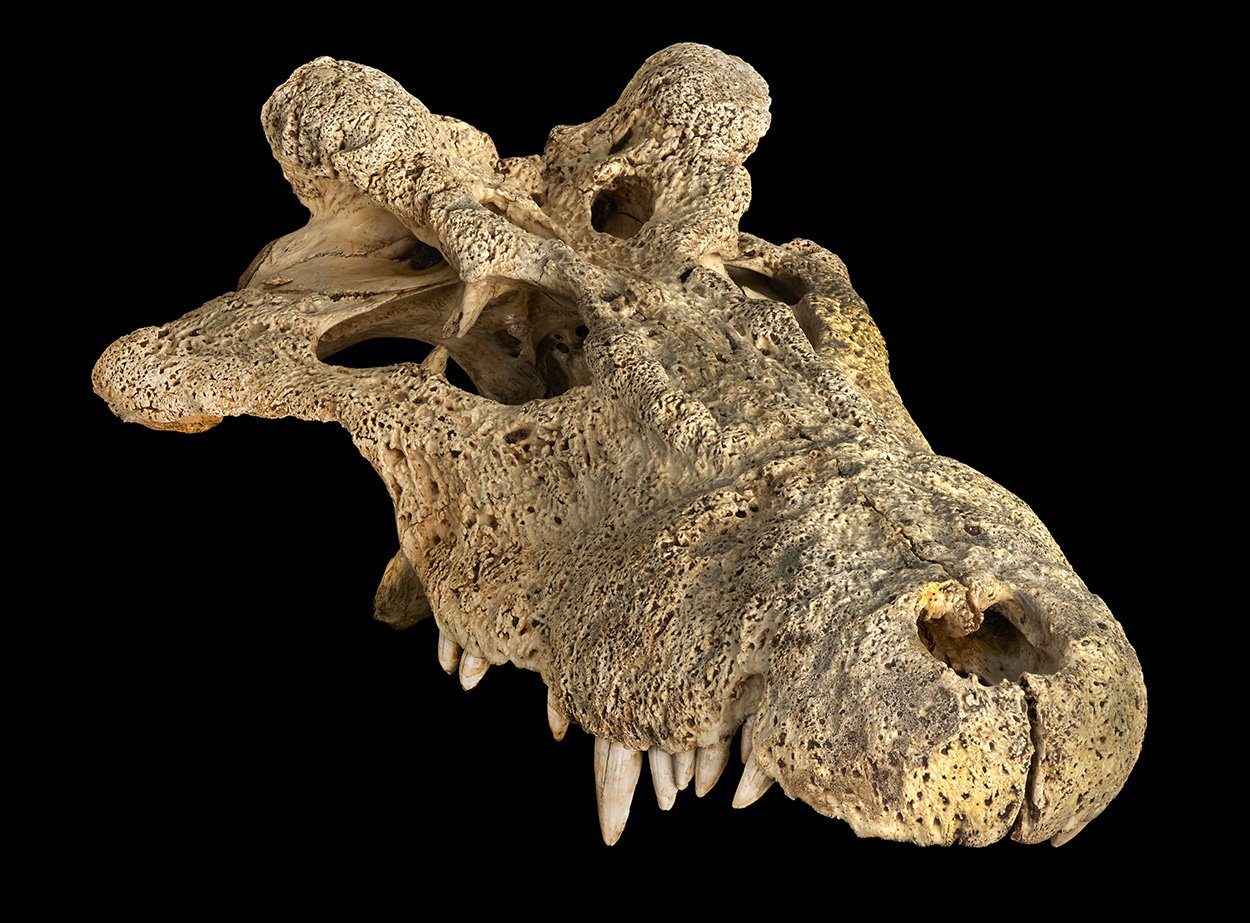
This skull comes from an extinct crocodile that has long puzzled researchers. The reptile, once native to Madagascar, resembled the Nile crocodiles in many ways, but had two bony horns on its forehead.
Around 9,000 to 2,500 years ago, Madagascar was home to some bizarre creatures that are now extinct, including the gigantic elephant birds, but also horned crocodiles (Voay robustus). Outwardly, these were very similar to today’s Nile crocodiles, but had two short, thick bony protrusions – horns – on their foreheads. With a body length of up to five meters, these crocodiles could have been Madagascar’s largest predators for a long time.
But how does this horned crocodile fit into the crocodile family tree? This has been researched for more than 150 years: In the 1870s it was first described as a new species within the group of real crocodiles (Crocodylus), which includes the Nile crocodile. At the beginning of the 20th century it was believed that these were early variants of the Nile crocodiles. And in 2007, based on the physical characteristics of the fossil specimens, researchers suspected that the horned crocodile belonged to the group of dwarf crocodiles.
Scientists working with Evon Hekkala from Fordham University in New York have now gained more recent insights into the position of the horned crocodiles. To do this, they isolated and sequenced the DNA from horned crocodile fossils, including the well-preserved skull in our photo from the American Museum of Natural History.
The result: The horned crocodile forms a sister group of the real crocodiles, which is still relatively close to the last common ancestor of these two groups. “Our results thus refute previous phylogenetic classifications that Voay assigned to dwarf crocodiles,” the researchers report.
In their view, their results also support the hypothesis that the ancestor of modern crocodiles must have originated in Africa rather than Asia. “The placement of this species suggests that real crocodiles originated in Africa and from there some went to Asia and some to the Caribbean and the New World,” concludes George Amato of the National Museum of Natural History.